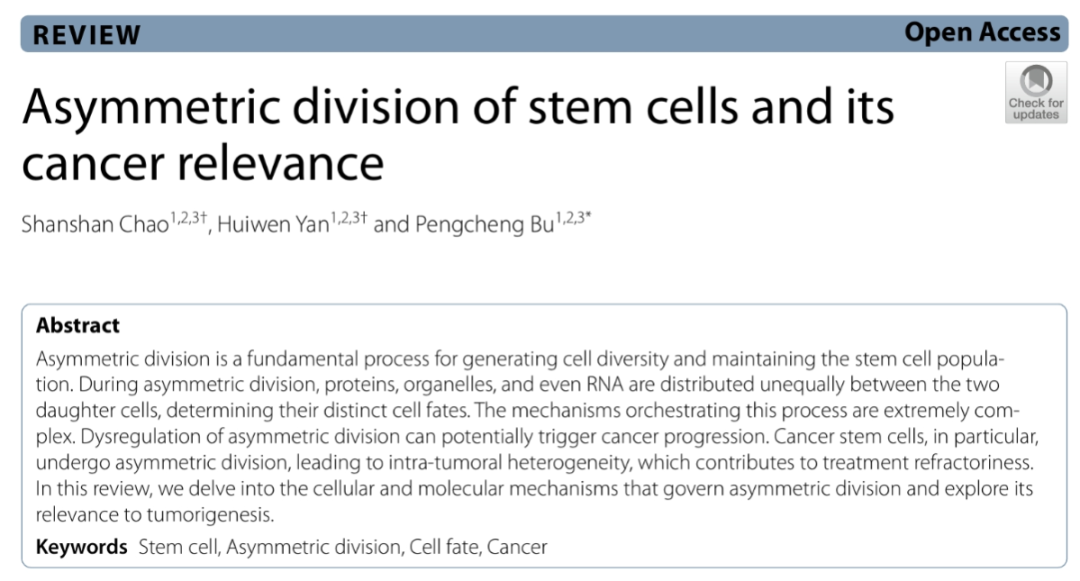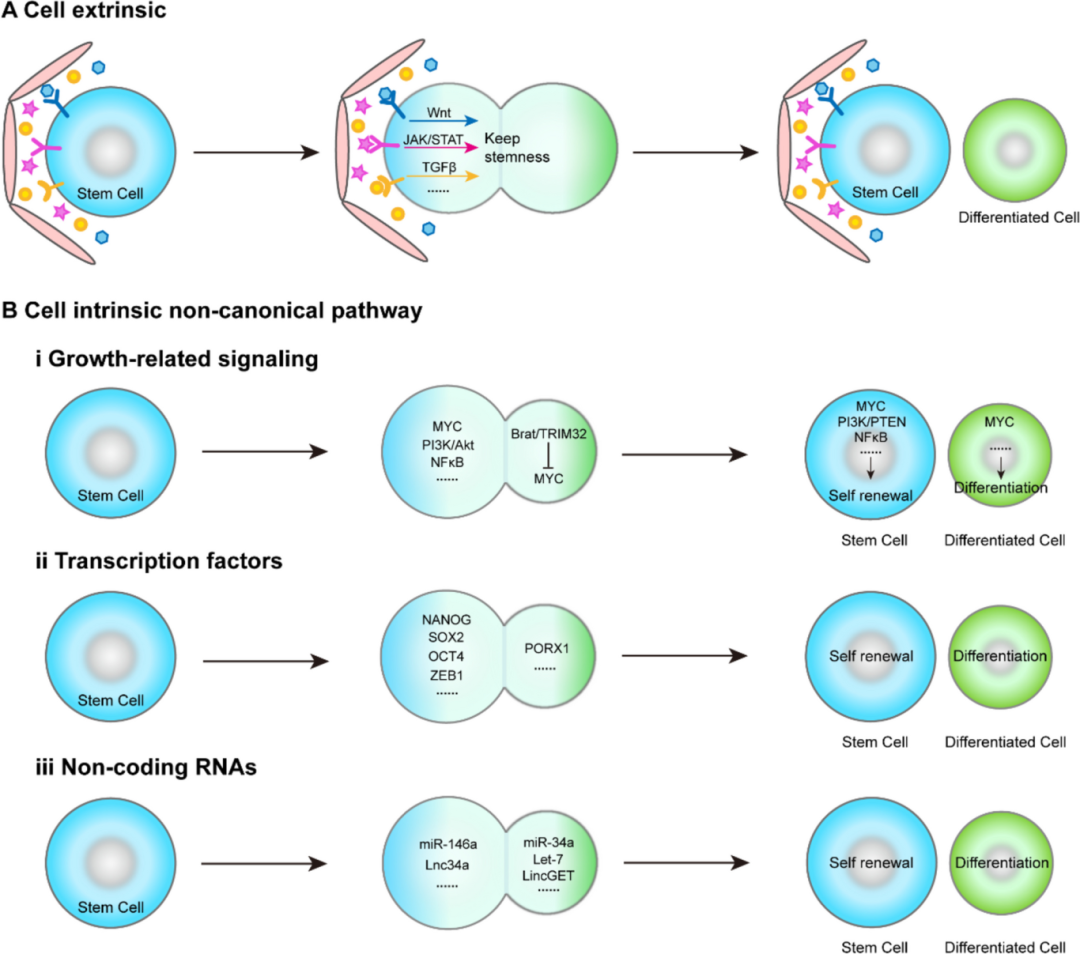
Source: Cell World
Asymmetric division of stem cells is a special division mode that can generate cell diversity and maintain cell pool homeostasis. In the process of asymmetric division, the uneven distribution of proteins, organelles, and even RNA between the two daughter cells determines their different cell fates. The mechanisms involved in coordinating the asymmetric division of stem cells are extremely complex, and dysregulation of this process can lead to a variety of diseases, as well as trigger the progression of cancer. There are a small number of tumor stem cells in the tumor, and tumor stem cells can increase intratumoral heterogeneity through asymmetric division, which makes the treatment of cancer more difficult. Therefore, a deeper understanding of the cellular and molecular mechanisms underlying asymmetric division could provide new strategies for cancer treatment.
Recently, Bu Pengcheng research group of the Institute of Biophysics of the Chinese Academy of Sciences published a review article entitled "Asymmetric division of stem cells and its cancer relevance" in Cell Regeneration. The regulation mechanism of asymmetric stem cell division and its correlation with cancer were summarized comprehensively, which provided theoretical basis and therapeutic strategy for cancer treatment.

The asymmetric division of stem cells is a highly coordinated process, which is determined by both internal and external fate determinants. Intrinsic determinants of fate include apical protein complexes formed by aPKC/PAR6/PAR3, bottom-end complexes formed by Miranda/Prospero/Brat, and spindle assembly. The extrinsic determinants of fate come from the extracellular microenvironment around the stem cell, the stem cell niche. Stem cell niches typically provide external signals (such as ligands) to regulate downstream stem cell transcriptional activity and determine cell fate. Signaling pathways such as TGFβ, Wnt and sonic hedgehog pathway are all involved. In addition, some atypical signaling pathways may directly or indirectly influence the asymmetric division of cells, such as the Myc pathway. Certain transcription factors, including Nanog, Sox2, and Oct4, accumulate asymmetrically in stem cells and play a role in determining cell fate. In addition, micrornas such as miR-34a, Let-7, and miR-146a also play a key role in asymmetric division. In addition to molecular determinants (such as RNA and proteins), organelles such as centrosomes, mitochondria, lysosomes, endosomes, endoplasmic reticulum, and intermediates also undergo asymmetric distribution during asymmetric division.

External and internal factors in the asymmetric division of stem cells
Disruption of asymmetric division is an important factor in cancer induction. Normally, stem cells dynamically switch between asymmetric and symmetrical division to maintain homeostasis. A large number of studies have shown that when the asymmetric cell division process is dysfunctional, it may lead to the enhancement of self-renewal of stem cells, resulting in excessive growth and the occurrence of tumors and promote cancer progression. The abnormal expression of aPKC, L(2)GL, PROX, Numb, DLG and other cell fate determiners is associated with tumor. In addition, micrornas related to self-renewal and differentiation also play a role in the development of cancer. They are usually involved in maintaining the activation of the Notch/Wnt signaling pathway or inhibiting the expression of differentiation-related transcription factors. Previous studies have shown that the asymmetric division of tumor stem cells is negatively correlated with their proliferative ability. An abnormal increase in symmetrical division will lead to more undifferentiated and malignant states. Therefore, an abnormal transition from asymmetric to symmetrical division may lead to the progression of cancer.

Asymmetric or symmetrical division during tumor development
Understanding the mechanisms of asymmetric division can help us find new targets for tumor suppression, and the way to convert symmetrical division into asymmetric division may also provide a new treatment strategy for advanced patients.